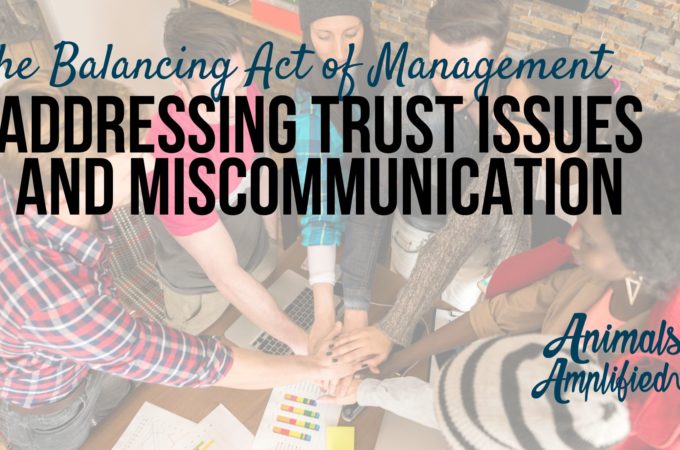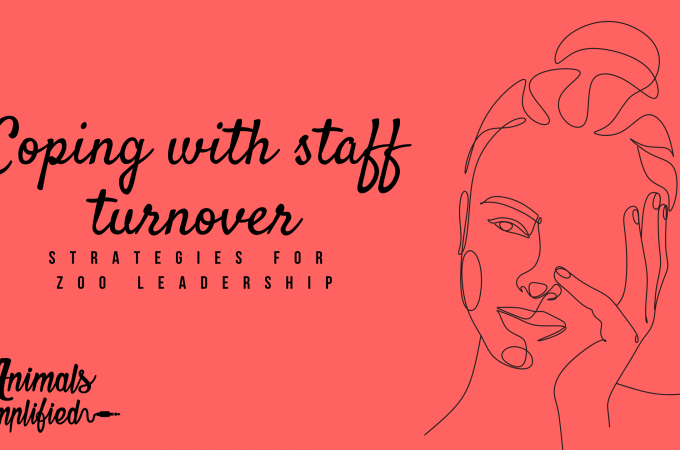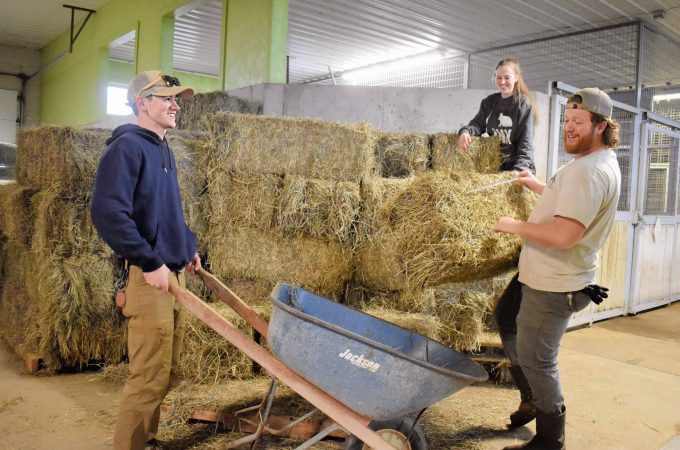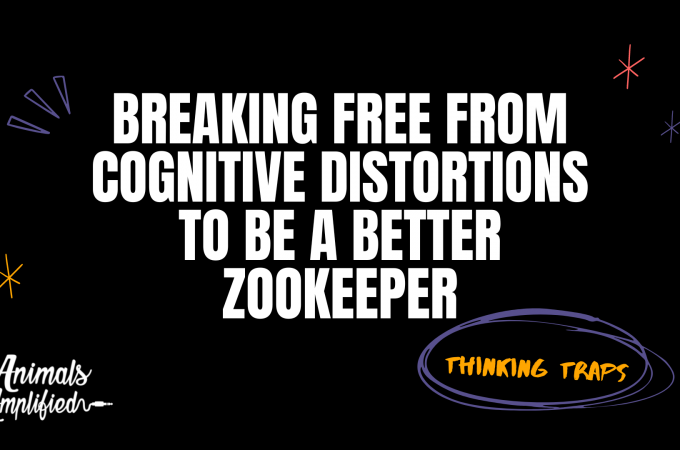
Communication Strategies for Zookeepers
Zookeepers are animal people, not people-people, so communication doesn’t always come easy for zoo teams. The great news is that most zookeepers are also animal trainers and animal trainers are some of the best communicators out there. This blog will provide communication strategies for zookeepers to improve animal welfare and team culture so keepers and animals can thrive.
Top 3 Communication Skills for Zookeepers
If zookeepers master these three communication skills, zoo employee engagement will improve, and turnover will be reduced. The great news is these communication skills for zookeepers are easy. If you’re in a leadership position at a zoo, it’s essential to remember that many of these skills are not innate and need to be practiced.
- Assume Best Intent – When communication goes south, there’s usually an emotional reaction to blame. In our free Be a Better Keeper Course, we teach keepers to recognize when they are having emotional reactions and tune in to the stories they might be telling themselves about the situations. For example, when a supervisor doesn’t react immediately to a request from a keeper to look into a medical issue, a keeper may perceive that the supervisor doesn’t care about the animal’s welfare. Be a Better Keeper provides healthy communication strategies for zookeepers so they can express their concerns to leadership in a way that is heard and respected.
- Address Conflict – Another vital communication skill for zookeepers is addressing conflict and challenges directly and professionally. Many facilities suffer from low zoo employee engagement because resentment and frustrations aren’t expressed or heard. Using the “Script it” technique and practicing it with your zoo teams is a great way to encourage conflict resolution head-on. This technique enables the user to identify the behavior and impact of the other person and then ask a question to open a dialogue. For example, “I noticed that you rolled your eyes when I asked for help in the morning meeting. That made me feel like you don’t think I should be asking for help. Is that how you feel?”
- Advocate for animal care – To be heard, many of us exaggerate or embellish when we’re advocating for our animals. “The bongo hasn’t eaten in days and won’t stand up at all. We have to get the vet over here now!” Leaders discover that the bongo didn’t eat two days out of 5 and is just lying down more than expected. This degrades leadership’s trust in what the employee reports, exacerbating the problem of the keepers not feeling heard. A communication skill that can be very useful to rebuild that trust is teaching keepers (and leadership) to stick to observable facts when reporting issues with animals and using measurables whenever possible.
Enroll your team in Be A Better Keeper to improve communication strategies for zookeepers
Zoo employee engagement
Poor communication strategies for zookeepers are directly proportionate to zoo employee engagement. When leadership communication is lacking, it trickles down to the zookeepers, and engagement also goes down. Improving communication in your zoo will reduce turnover and increase zoo employee engagement.
Preventing Silos
There’s no book on how to work as a zookeeper, so most information must be passed from veterans in the field to new keepers. Things like how to do tiger introductions or what foods might be harmful to different animals are some information shared between team members. As an industry, we’ve compiled some great resources like husbandry manuals, and I’m always impressed by the amount of information you can find in a breeding and transfer plan. Yet still, information is lost and guarded.
One of the most common ways this happens is through silos. When one keeper works one string or routine and has only a backup on their days off, it’s easy to become siloed. I encourage zoo leaders to cross-train and keepers to rotate through sections whenever possible. This requires good communication strategies for zookeepers, like Standard Operating Procedures (SOPs) and systems for sharing individual animal information.
Marine mammal, ambassador, and elephant teams are often really good at these systems and procedures because their routines require multiple people working with the same animals and the same routines. Check out this blog on whiteboards and binders for examples of great communication strategies for zookeepers.
Holding good meetings
Zookeepers are excellent at many things. Like reading behavior, pressure washing, and pushing the limits of what a zip tie can do. But sitting through and leading meetings is missing from the list of skills of a zookeeper. You’re always moving and cleaning when they teach you how to work as a zookeeper. Not sitting in a quiet room. No wonder, so many zookeepers fall asleep in meetings.
They must collaborate to get the most participation from a meeting and keep zookeepers engaged. Communication skills for zookeepers need to include how to run a good meeting. Meetings should always start with personal and professional good news. Each person participates and shares something good from their personal and work life. This helps us remember that our teammates are human and have lives outside of work.
Next should be an update on what winning looks like for the team. Ideally, each zookeeper has a measurable number that tells them and the team they are excelling. Maybe it’s the number of successful births, routine times, enrichment given, training sessions completed, animal welfare scores, etc. At each meeting, every keeper should have the chance to report their number. If it is on track or off track with their goals.
Each team member should also have quarterly goals and report at each meeting if they are on track or off track with their goals. If they are off track on their measurable goal, the team should discuss how they can help get their fellow keeper back on track. There should also be a time in the meeting to identify, prioritize, discuss, and solve issues affecting the team. Having goals and measurables improves zoo employee engagement.
As these issues are discussed, action items will be generated. Reviewing what action items from the previous meeting have been completed is also an integral part of the meeting. Meetings are an essential part of communication strategies for zookeepers. All should work to master these skills to ensure we’re continuing to push our facilities forward.
One-on-one’s and Personal Growth
One of the most common requests from zookeepers is more personal and professional growth opportunities. They want to feel like their leaders are invested in their development. Zoos with excellent professional development programs see higher zoo employee engagement. Sometimes leaders and keepers forget that professional development doesn’t have to be a promotion or a raise (though those things are nice).
Developing the skills of a zookeeper through online courses, mentorship, job shadowing, and conferences are some ways leadership can help encourage professional and personal development. Many Employee Assistance Programs also provide financial and job coaching. They also provide mental health resources to check in on what’s available for your team.
In addition to providing development in how to work as a zookeeper, having a manager focused on your personal and career growth is essential. Quarterly check-ins are a great way to spend time with your direct reports and learn more about their needs. If you want a template for efficient and effective one on ones, Animals Amplified provides that for zoo leaders. We also have coaching scripts to help you communicate directly.
Just complete these forms to get the one-on-one template and coaching scripts.
Teaching Leaders to Listen First
Listening is a communication skill for zookeepers that we could all work to improve. We often think about how we will respond or make our point instead of just listening. Training your leaders to be good listeners is a vital communication strategy.
Reminding yourself to track your question-to-answer ratio in a conversation is a great first step at improving as a listener. You should aim to ask more questions than you provide answers.
We all have an advice monster inside of us. If you are a natural leader or problem solver, your advice monster is probably a maniac! Learn to say, “shut up, advice monster,” and ask questions instead.
Sometimes leaders are just busy, so when they are approached with a question or suggestion, their first response is to solve the problem and answer quickly, which often leads to keepers not feeling heard. Two-way cards are an excellent way to combat this. If your team has a question or suggestion, encourage them to write it on a two-way card and turn it into leadership. It’s then the leadership’s job to review the card, challenge their initial reactions or urge to answer, and provide a well-thought-out response. This response should be well-researched and supported.
Lastly, sometimes when emotions run high, it’s easy for people to get defensive. An important communication skill for zookeepers is learning to “get curious” when they want to “get furious.” Taking a breath and asking questions instead of jumping to the defense will improve communication and zoo employee engagement.
Communication Strategies for Zookeepers Need Practice
No matter your skill level in communication, practice never hurt anyone. All of these communication strategies for zookeepers require practice. While role-play can be uncomfortable, it’s a great way to practice the skills when emotions aren’t running high. During Animals Amplified communication workshops, we learn and practice these communication skills and give each other feedback. Being able to provide feedback on someone’s communication during roleplay gives your teams a chance to address issues in a safe place.
For more on improving communication on your zoo teams, reach out to set up a free discovery call with LynnLee.





